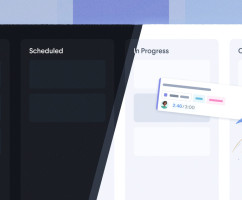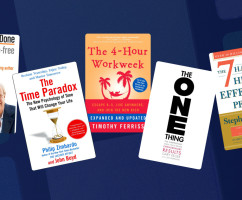There are so many fancy task management techniques and hacks to boosting your productivity, all of which fight for your attention to try and proclaim themselves as the best way to get more work done.
But Shreyas Doshi calmly brings years of working in project management environments (in some of the top companies in the world) together with his own incredible thinking to come up with the ‘LNO Framework’.
It might sound complicated and at this point, you might have even switched off, but the LNO Framework is actually very simple when you break it down, and could completely change your approach to prioritizing your tasks and be a game-changer for your productivity.
Let’s unpack it.
“All Tasks are Not Created Equal”
Says the master (Shreyas). And he is right. When we sit down at our desks and open up the to-do list we are bombarded with all the things we need to get done today or this week and we usually just start picking away at it.
Maybe it’s the first item on the list, or maybe it’s the one that’s the most fun for you to do, or perhaps the easiest one. Maybe you don’t get any of the items on the list done and you procrastinate for hours because the list is so overwhelming.
The fact is that those tasks all look the same on that list, but they do not have equal weight.
When we apply the LNO Framework to our task list it’s going to look a lot different, and you’ll be amazed at how your personal or team’s productivity goes through the roof because of how you prioritize your task list.
What Does LNO Stand For?
LNO stands for ‘Leverage Neutral Overhead’. It’s not meant to be read as a phrase, but rather as three separate words that you assign to different tasks. Because all tasks are not created equal the amount of reward versus the effort changes depending on the type of task.
Let’s look at each of the letters and see what they mean.
Leverage (The ‘L’)
What does Leverage mean? Imagine a see-saw. If you place your hand down on the part of the see-saw that has the most distance (or leverage), it will be easier to lift up the load on the other side with a shorter distance. Basic science.
Imagine that with a task. Of course, you need effort to push down the see-saw, but if you use a lot of leverage the size of the load you can lift is a lot higher. If you have a big task, but it’s leveraged then your reward will be the effort put in multiplied by a lot.
The formula looks like this:
However these tasks are the ones that seem the biggest, and the ones you don’t really want to do. Our brains are wired to receive instant gratification, therefore if we see a task that we know won’t give us a reward for a while then it becomes harder to be motivated to start that task.
For example, it could be a blog post, writing content, working on SEO, or designing a landing page. These are tasks that will require effort but will bring very high rewards in the long term. We should make time and space for L tasks.
As Shreyas says...
Do a great job. Let your inner perfectionist shine.
What he is saying is that these are the tasks you should be a perfectionist about, and do your very best, because they are worth the effort.
Neutral (The ‘N’)
Neutral tasks bring a reward that is equal to the amount of effort put in. They are flat or neutral. For these types of tasks you just want to get the job done and do good enough.
The formula is:
Neutral tasks are typically things like scheduling your week, tidying your desk, meeting a client, or fixing a bug; chores basically. You need to do these types of tasks but they don’t really benefit you if you put more effort in than is required. They are often habitual tasks and are easier to take on than L tasks because they are repetitive.
These types of tasks can require your attention and can easily get in the way of L tasks, so the key is to make sure that your effort is good enough.
Shreyas says this about N tasks...
Do a strictly good job. No better.
Overhead (The ‘O’)
Overhead tasks give you less value than what you put in. ‘Overhead’ is actually a finance term referring to ongoing business expenses that don’t often produce any output. So often we get caught up in these necessary evils which we think are important but end up stealing our valuable bandwidth.
And the formula is, you guessed it:
The warning from Shreyas here is clear...
Just get it done. Actively try to do a bad job.
The types of tasks you might come across as O tasks would be, shopping for groceries, watching TV, and putting together a spreadsheet.
If you’re really into formulas, by the way, this is a great formula that sums up the whole LNO framework:
The overall formula:
(Value created - Cost of your time) / Time taken (cost of your time)
Prioritizing Your Tasks With LNO
So now we understand the basics, let’s apply what we know about this framework to our task list. It’s important to note here that we have to know what the value metric is for our ‘reward’. It could be the number of bookings for an event, or it could be straight-up cash, whatever it is only you will know the answer—but it’s important to know.
If a task brings you a greater reward than what you put in then you will know it’s probably an L task, if the task just saps your energy and doesn’t bring any tangible value (but is still necessary), then you know it’s an O task.
An Example LNO Task List
Shreyas shares an example Pre-LNO and Post-LNO to-do list on his Twitter, which gives incredible insight into the power of utilizing this framework.
Pre LNO
Post LNO
As you can see, on the left side we have our typical to-do list before LNO is applied. On the right, we see the list categorized into colors based on the LNO Framework. It’s worth observing that in this example Shreyas hasn’t prioritized the list in a particular order, but he has prioritized it based on the number of hours allocated to each task, with the L task getting the most time allocated.
LNO and Attention Residue
We recently covered 'Attention Residue' or 'Context Switching' in another post, with the basic premise being that we often leave focus behind when switching to a new task. If we prioritize our tasks based on the LNO framework then attention residue shouldn’t be so much of an issue as we’re putting our most valuable L tasks first, then moving to N and O tasks. If we have some residual focus left in L then that’s a benefit because it will make you more perfectionist about it!
So to conclude, when prioritizing your task list, whether it’s in HourStack or in any of the many task management platforms out there, consider the LNO framework. It will help you make the most out of the hours in your workday, which is our motto!
Finally a quote from Shreyas:
Doing great work does not equal putting in your best effort for everything.
Updated October 27, 2022 in Tips & Tricks






